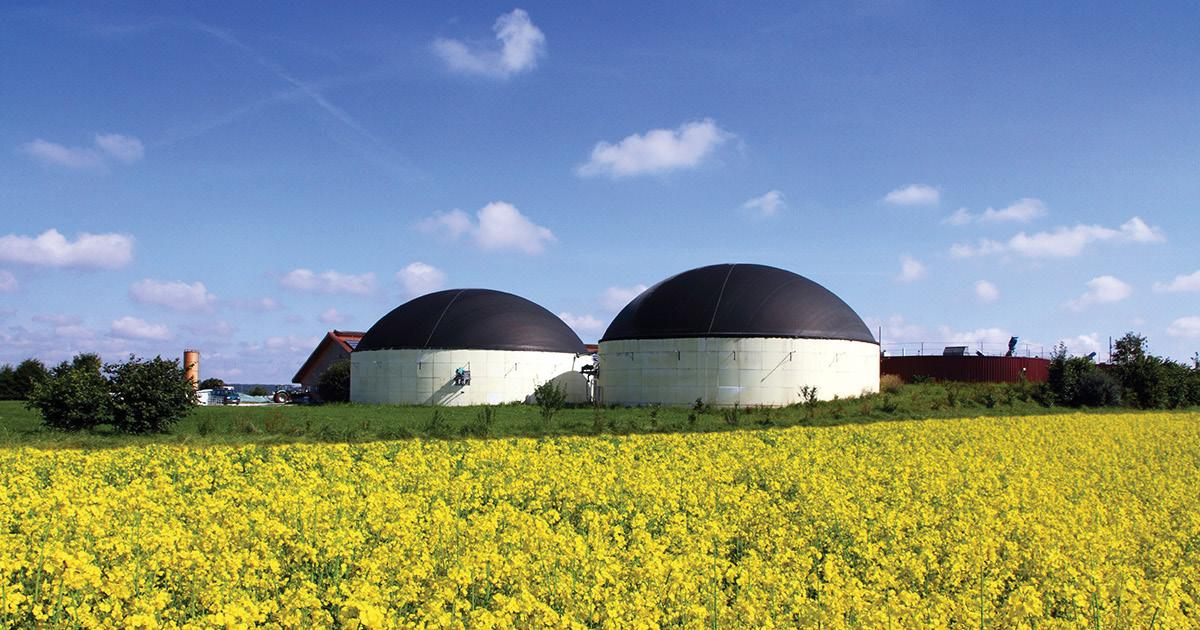CARBON OFFSETTING
THE CLIMATE CAN’T WAIT, SO WHAT’S THE SOLUTION? THE CASE FOR 100% CARBON NEUTRAL GAS. James White, sustainability executive at ClimateCare.
G
reen tariffs, centred around renewable electricity, have become commonplace within the energy sector. In 2019, renewable electricity provided more electricity to UK homes and businesses for the first time, surpassing all other forms of fossil fuel energy generation. Less than ten years ago, fossil fuel represented four fifths of the UK’s electricity generation. As renewable electricity becomes the norm - organisations are turning their focus to another component of their energy supply; gas. Solutions for UK ‘green gas’ or biomethane do exist, however, there are currently challenges to delivering this at the scale required to provide the UK with a 100% carbon neutral gas supply. This article explores the current status of UK green gas, and the alternatives available to those within the energy industry.
WHAT IS UK BASED GREEN GAS? Emissions from the use of natural gas are the primary emissions source in residential and public sectors, accounting for 20% of all carbon emissions in the UK in 2018. As a result, solutions are increasingly being explored to tackle this impact, including UK ‘Green Gas’. Green gas, or biomethane, is made through anaerobic digestion. This uses bacteria to break down organic materials – like food or farm waste – to release biogas. The biogas is purified and turned into biomethane, which
30
is injected into the gas grid. Once in the grid, it’s piped into homes. In contrast to natural gas, Biomethane is produced from renewable sources, like food and farm waste and is carbon neutral. Natural Gas reintroduces carbon dioxide (CO2) into the atmosphere that has been locked away for millions of years, whereas biomethane is produced from organic materials that absorbed carbon dioxide while they grew. This means that when it’s burned, it only releases that same amount of carbon dioxide. In 2019 Green Gas supplied one million UK homes. This was a significant increase since 2017, with this anticipated to surge over the next three years to up to £400m of investment in the sector, according to the UK’s four main gas network operators. However, Green Gas through Biomethane represents just 4% of the UK’s annual demand for green gas. Supply is not able to meet demand, and unfortunately bridging the gap will take significant time and resource. There is a clear need for an interim solution. And this is where carbon offsetting comes in.
ENERGY MANAGER MAGAZINE • MAY 2020
WHAT IS CARBON OFFSETTING? Carbon offsetting provides a means to mitigate the impact of emissions now. Used by international Governments, businesses and NGOs (and recommended by the UN) many in the energy industry are now exploring how they can use carbon offsetting to compensate for their residual emissions. Put simply, offsetting means compensating for your carbon emissions by funding an equal reduction in emissions elsewhere in the world. These emissions reductions are generated by projects around the world which adhere to internationally recognised and independently verified standards to ensure that the climate and social benefits they deliver are both tangible and additional.
HOW DOES CARBON OFFSETTING HELP THE PLANET? Carbon Offsetting is a vital tool in tackling climate change, mitigating the impact of emissions we create













